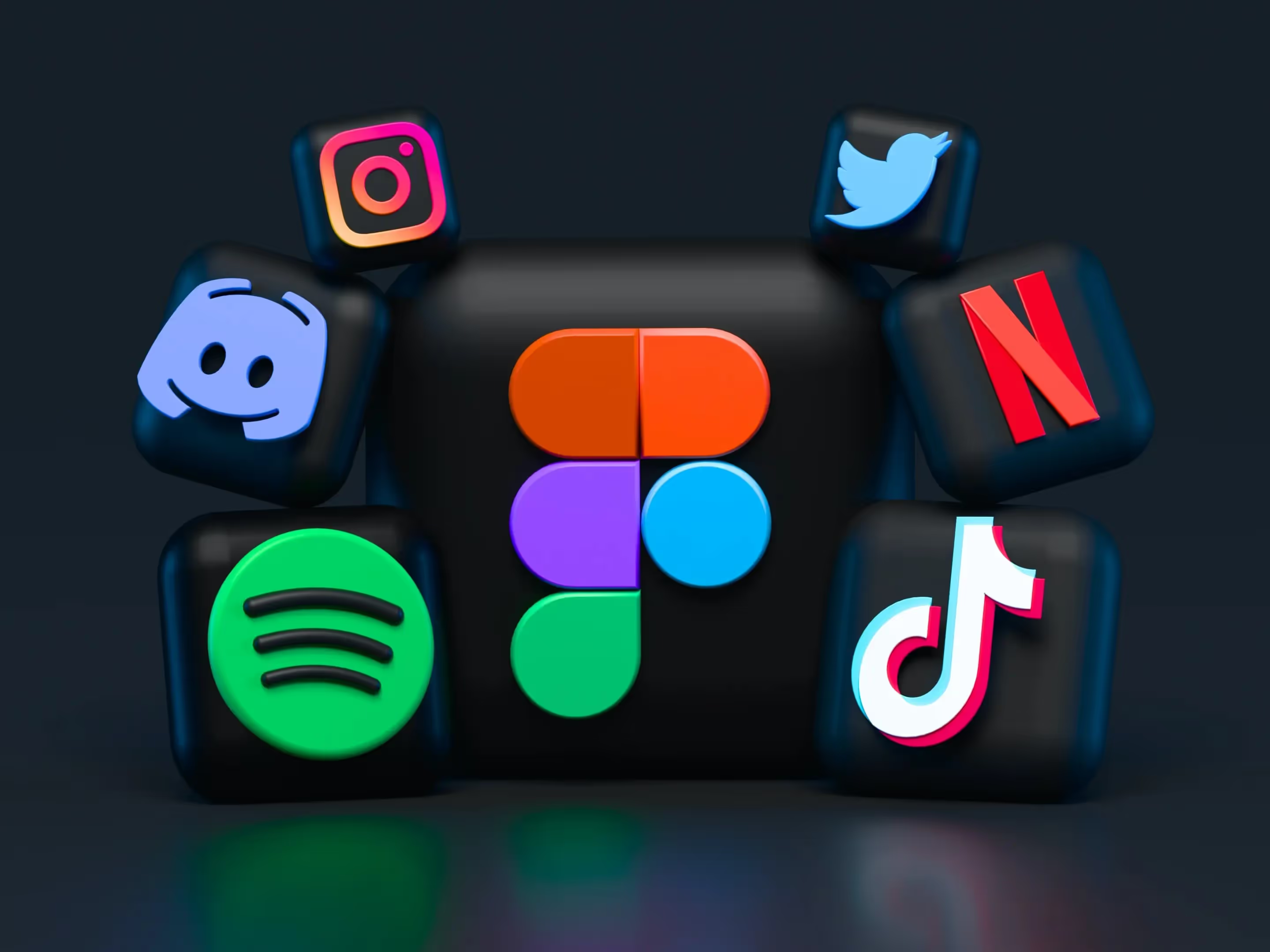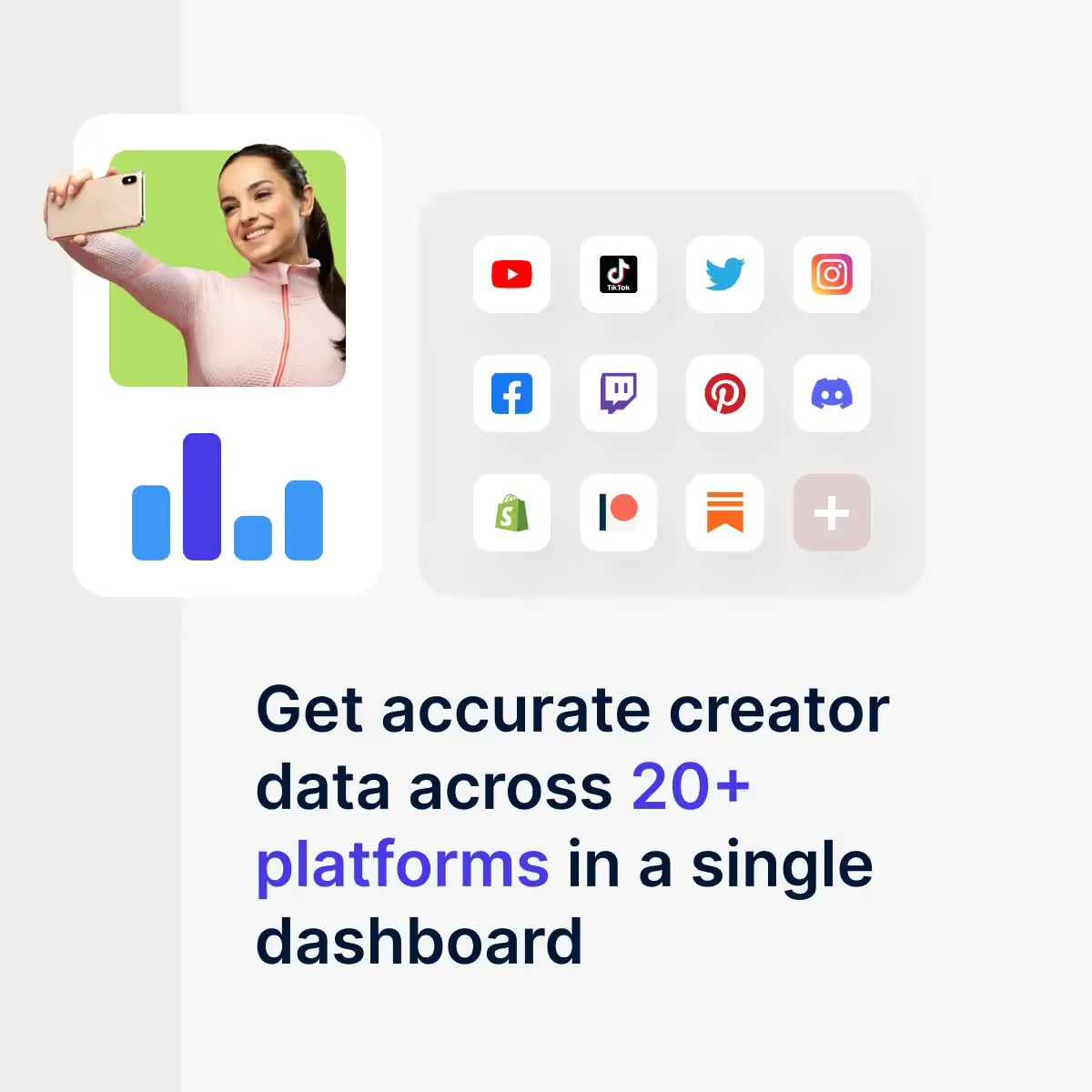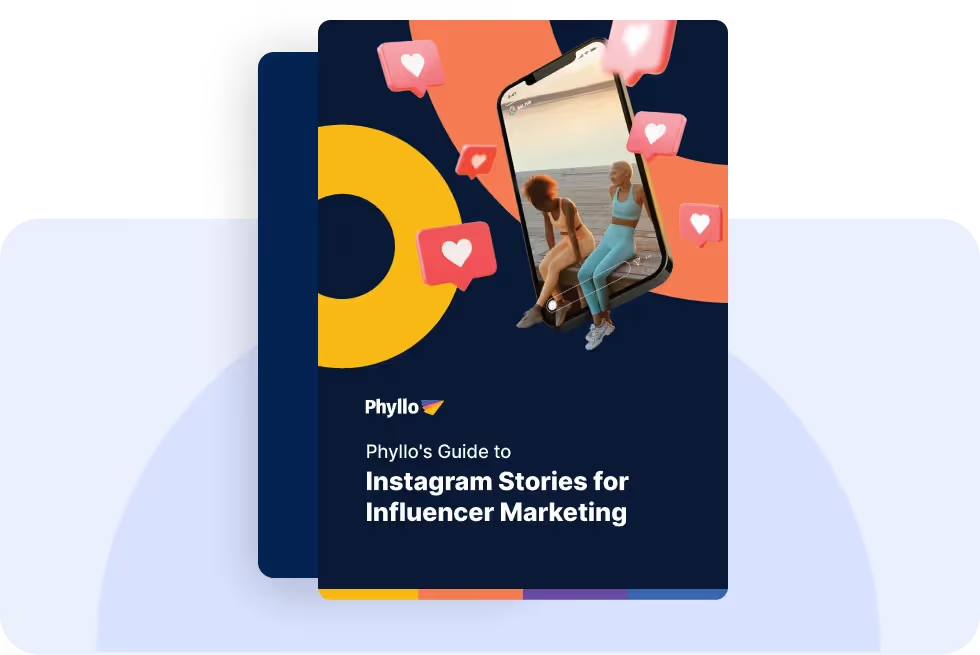In the age of social media, APIs have ushered in a transformative era. They enable developers to leverage these digital platforms to foster a better creator ecosystem. From building a simple tool to publish all of the creator's posts on 5+ platforms with a single click to detailed social analytics tools, APIs can help developers of the creator economy build tools with ease.

Today, social media platforms have become integral to our lives, generating vast data every second. By leveraging Social Media APIs, developers can tap into this data and create applications that enhance user experiences, drive business growth, and enable seamless integration with social platforms.
What is Social Media API? Why Do We Need It?
Social Media API (Application Programming Interface) refers to a set of protocols and tools a social media platform provides to enable developers to interact with their platforms and access various features and data. It bridges developers and social media networks, allowing them to create applications, integrate social media functionalities, and retrieve information from social media platforms.
We need Social Media APIs for several reasons -
- They facilitate the development of third-party applications that enhance user experiences on a social media platform. Developers can create tools, plugins, and integrations that add new features, automate tasks, or provide analytics. This enables users to have a more personalized and efficient social media experience.
- Social Media APIs allow businesses and marketers to integrate social media platforms into their strategies. They can develop applications that interact with social media networks for posting content, managing accounts, analyzing data, and running advertising campaigns. This integration helps businesses reach a wider audience, increase brand visibility, and gather valuable insights into their social media performance.
- Social Media APIs are crucial in data access and analysis. Developers and researchers can study user behavior, sentiment analysis, trends, and other valuable insights with authenticated data. This data can be used for market research, product development, customer engagement, and decision-making processes.

Benefits & Importance of Using Social Media APIs
The benefits of using Social Media APIs are manifold. Firstly, they provide developers access to a wealth of user-consented social media data. This data can be used to gain insights into user behaviors, preferences, and trends. By analyzing this information, businesses can better understand their target audience and tailor their marketing strategies accordingly.
Secondly, Social Media APIs enable developers to build applications seamlessly integrating with social platforms. This integration allows users to interact with their favorite social media platforms without leaving their application. For example, users can post updates, share content, and even log in using their social media credentials, all within a single application.
Moreover, Social Media APIs facilitate the automation of tasks. Developers can use these APIs to automate posting updates, scheduling content, and analyzing social media metrics. This not only saves time but also improves efficiency and accuracy.
Social Media Posting & Scheduling API
The Social Media Posting & Scheduling API is a vital tool for developers aimed at enhancing efficiency and user engagement on digital platforms. This API enables the automation of content posting and the meticulous scheduling of social media posts across various channels. By leveraging this functionality, developers can create applications that allow users to plan and execute their social media strategies seamlessly. This not only saves time but also optimizes content visibility by ensuring posts are scheduled for the most effective times based on analytics-driven insights. Such APIs are indispensable for marketers and social media managers who require robust tools to maintain a consistent and impactful online presence.
What is Social Media API integration?
Social Media API integration is incorporating social media platforms into applications. It involves connecting the application to the social media platform's API and using the provided tools and resources to interact with its data and functionalities.
Why integrate Social Media APIs into applications?
The answer lies in the added value it brings. By integrating Social Media APIs, developers can build numerous social media services and enhance their applications' functionality and user experience. Users can log in using their social media accounts, share content seamlessly, and interact with their social networks without leaving the application.
Social Media API integration also enables developers to leverage the social media platforms' data and functionalities to create personalized and targeted user experiences. For example, an e-commerce application can use Social Media APIs to display personalized product recommendations based on user's social media activity and interests.
Related Read: Guide on Social Media Listening & Monitoring API
Popular Social Media APIs and Their Functionalities
There are several popular Social Media APIs, each with its own set of functionalities and benefits. Let's take a closer look at some of them:
- Instagram API
- Facebook API
- Tiktok API
- YouTube API
Instagram API
Instagram's Graph API provides developers with a range of capabilities. Using this API, developers can access user media, handle and respond to comments on their media, identify media where a business or user has been @mentioned by other Instagram users, search for media using hashtags, and obtain fundamental metadata and metrics regarding other Instagram Businesses and Creators.
You can leverage the Instagram APIs for several use cases. Some of these include -
- By leveraging the Hashtag Search API, you can retrieve data related to specific hashtags, extract images associated with particular hashtags, and dynamically display them on your website. This functionality is valuable in promoting your social media accounts to website visitors. Moreover, you can utilize the API to fetch content based on geographical locations where it was originally posted, expanding the scope of content aggregation. Read more on How to use Instagram API to pull photos based on hashtag
- The Instagram Mentions API offers valuable capabilities for social listening. It enables real-time monitoring of brand mentions, retrieval of media and comments, sentiment analysis, engagement opportunities, insight generation, and strategy refinement. By leveraging this API, businesses can actively listen, engage with their audience, and extract meaningful insights to strengthen their social media presence.
- The Instagram Insights API is valuable for building user-generated content (UGC). It provides access to detailed analytics, helping businesses identify top-performing content and trends to encourage UGC creation. Businesses can foster brand advocacy and strengthen their social media presence by monitoring UGC engagement and amplifying compelling content.
- The Instagram Graph API can also be utilized to obtain ephemeral data like Instagram Stories. Using the API, developers can access information about users' stories, including their media, captions, locations, hashtags, and engagement metrics.

Check out how Beacons Media Kits incorporate IG videos in their application
Facebook Graph API
The Facebook Graph API is a powerful tool for developers to access and utilize Facebook's vast social graph. With this API, developers can retrieve user data, post content, and interact with Facebook's features programmatically.
You can leverage the Facebook API for several use cases. Some of these include -
- By utilizing the Facebook Graph API, developers can access and analyze data to gain insights into their page and audience. This includes understanding which writers and post types receive the most likes, enabling businesses to optimize their content strategy.
- The Facebook API also allows for a deeper understanding of the audience. Developers can gather demographic data on page visitors, gaining insights into their preferences, requirements, and interests. This information enables businesses to tailor their offerings and enhance their user experience.
- The Facebook API provides the ability to manage ads effectively. With a single request, developers can retrieve ad account content and creatives. Additionally, access to ad reports enables businesses to track and measure the performance of their advertising campaigns, helping them optimize their strategies for better results.
TikTok API
TikTok provides an open API to developers who intend to integrate TikTok into their applications. Access to TikTok API can help you develop features in your application, such as sharing videos straight from your application to TikTok, embedding the TikTok videos onto your website, uploading or downloading videos, etc.
You can leverage the TikTok API for several use cases. Some of these include -
- With the TikTok API, developers can integrate TikTok content directly into their applications or websites. This allows users to view TikTok videos seamlessly within the developer's platform, providing a richer and more engaging experience. For example, developers can create curated video feeds and personalized recommendations or implement TikTok-based challenges or trends within their applications.
- The TikTok API enables developers to authenticate users, allowing them to log in or sign up using their TikTok credentials. This streamlines the user onboarding process and provides a convenient and familiar login method for TikTok users. Developers can also access user account information and manage user profiles, enabling personalized experiences and social interactions within their applications.
- The TikTok API provides access to valuable data insights and analytics. For TikTok videos, developers can retrieve engagement metrics, such as views, likes, and comments. This data can measure content performance, understand user behavior and preferences, and optimize content strategies. Developers can leverage these insights to refine their targeting, improve user engagement, and drive application growth.
YouTube API
The YouTube API empowers developers to extract videos from the vast YouTube platform based on various criteria such as users, channels, playlists, categories, and search terms. This provides the flexibility to display these videos directly on your website or utilize them in any desired manner according to your application's requirements. Whether you want to embed videos, curate playlists, analyze video data, or create custom video experiences, the YouTube API offers the necessary functionality to seamlessly access and incorporate YouTube videos into your platform or application. Learn more on YouTube API Limits
You can leverage the YouTube API for several use cases. Some of these include:
- With the YouTube API, developers can enable users to search for YouTube content directly from their applications. This lets users discover relevant videos, channels, or playlists based on specific search terms, categories, or trending topics, enhancing content exploration and user engagement. Learn more on How to Get YouTube API Key
- The YouTube API provides access to valuable analytics and insights about videos, channels, and user engagement. Developers can leverage this data to track video performance, audience demographics, engagement metrics, and other key indicators. These insights can inform content strategy, optimize performance, and drive growth within the creator economy.
Related Read: Instagram Audience Demographics for Influencer Marketing
Best Practices for Using Social Media APIs
When working with Social Media APIs, it is essential to follow best practices to ensure a smooth and efficient integration. Here are some key best practices to consider:
- Read the documentation: Familiarize yourself with the API's documentation to understand its functionalities, limitations, and best practices. This will help you make the most of the API and avoid unnecessary mistakes.
- Implement proper authentication and authorization: Protect user data and ensure secure interactions by implementing authentication and authorization mechanisms. This will help prevent unauthorized access and keep user information safe.
- Handle rate limits: Most Social Media APIs impose rate limits to prevent abuse and ensure fair usage. Handle these rate limits properly to avoid service disruptions and maintain a good user experience.
- Monitor and analyze API usage: Regularly monitor and analyze your API usage to identify performance issues or bottlenecks. This will help you optimize your application and ensure smooth and efficient interactions with the API.
- Stay updated with API changes: Social Media APIs constantly evolve, adding new features and functionalities. Stay current with these changes to take advantage of new opportunities and ensure compatibility with the latest API versions.
How Phyllo Helps Developers to Leverage Social Media API Integration to Create Features
Phyllo is an API gateway enabling developers to connect with various creator platforms like YouTube, Instagram, Twitch, TikTok, and more. By utilizing Phyllo, developers can directly access consented data from these platforms, streamlining the process.

Instead of individual developers creating their own integrations with these platforms, Phyllo simplifies and consolidates this process through a single, easy-to-integrate API. This eliminates the need for developers to maintain and troubleshoot multiple integrations individually.
Using Phyllo offers several advantages over building custom integrations for each platform separately. Whether you are considering developing such integrations or have already built them, here are some key points to consider for making well-informed decisions.
- Distribution
As the creator economy continues to evolve rapidly, platforms are also undergoing significant transformations.
In the past, building for this economy primarily involved integrating with platforms like Instagram or YouTube. However, the landscape has shifted, and now there are many equally important platforms to consider, including TikTok, Twitter, Twitch, Pinterest, Discord, Substack, LinkedIn, OnlyFans, Spotify, Cameo, and many more. This expansion necessitates the need for numerous custom integrations.
Consequently, you are faced with two choices: either allocate substantial engineering resources to integrate with multiple platforms without guaranteed returns or risk missing out on potential opportunities.
At Phyllo, we offer comprehensive coverage for platforms such as Instagram, YouTube, Facebook, TikTok, Twitch, Twitter, Pinterest, Discord, Substack, Shopify, Patreon, and more.
Explore the platforms supported by Phyllo by referring to the list here.

- Time to go live
Developing custom integrations of this nature involves several sequential steps, which include:
- Defining Use Cases: Clearly identifying the specific purposes and requirements for the integration.
- Researching Platforms and Documentation: Conduct thorough research on the targeted platforms and study their documentation to understand their APIs and capabilities.
- Data Normalization: Ensuring consistent data format and structure across platforms is crucial unless you want to limit yourself to only a few platforms.
- Application Engineering: Building the necessary application infrastructure and logic to integrate with the platforms and retrieve the desired data.
- Source Platform Approval: Obtaining approval from the source platform for the developed application.
Depending on the organization's size and use cases, this process can take months, if not quarters. Furthermore, this process needs to be repeated for each new platform integration.
Additionally, most source platforms do not provide webhooks, requiring developers to regularly implement a robust polling mechanism to fetch data from platform APIs. This mechanism can be a significant investment, complicated by platform rate limits, quota restrictions, and the challenge of retrieving content from ephemeral posts like Instagram Stories.
At Phyllo, we have already established this engine, where we poll data from platform APIs regularly throughout the day using our intelligent systems. This ensures at least one update every 24 hours and more frequent updates for ephemeral data such as Instagram Stories. We then utilize webhooks to notify you whenever there is a change in any of the metrics.
- Creator account connection experience
We understand user experience is paramount.
At Phyllo, we’re constantly learning, re-learning, and improving. We aggregate our learnings from various client experiences and implementations to create the best creator account connection flow.

Hence, a few things you get out of the box with Phyllo are -
- Suitable Disclosure Messaging to encourage creators to connect their accounts. We refine this based on creator feedback and what assures them the most.
- Data Consent Mechanism compliant as per GDPR, CCPA, and every primary data privacy law.
- Refined UX to onboard creators in complex onboarding journeys such as Instagram account connection that requires you to have a creator account.
- Information handling: Error messages, account disconnections, connection failures, and many other scenarios improve the creator’s conversion frequency.
- Cost of ongoing maintenance
Integrating with social/creator platforms requires continuous maintenance. This includes keeping up with changes in the platform's API, resolving ongoing integration issues, debugging errors, and providing support. Additionally, platform teams may occasionally request app audits and review data policies.
You can entrust the maintenance responsibilities to our web services using Phyllo APIs. We ensure uptime, adhere to support service level agreements (SLAs), and continuously enhance our product in line with the evolving source platforms.
- Security and scalability
As a creator business, your focus should be building winning customer features. Building the data infrastructure can be a distraction, including concerns about data security, scalability, and platform limitations.
With Phyllo, we prioritize safe and efficient data acquisition, employing best practices, monitoring tools, encryption protocols, and robust engineering at scale. This lets you focus on your core product while trusting us to handle your data needs.
Read more: Build vs. Buy - Social Media API Integrations For The Creator Economy
Wrapping up!
In conclusion, Social Media APIs have transformed how we interact with social platforms and opened up a world of possibilities for developers. By leveraging the power of connectivity, developers can build applications that enhance user experiences, drive business growth, and enable seamless integration with social media platforms.
However, building an API solution from scratch is difficult, especially for many platforms.
This is precisely why we built (and continue to build) Phyllo. We want you to get continuous access to verified, creator-consented data across hundreds of platforms without much hassle so you can focus on building your product to empower this new and budding ecosystem.
Schedule a call with us to learn more about how Phyllo can empower your business in the creator economy.
FAQ-
Q: What are the typical pricing structures for Social Media APIs?
A: Social Media API pricing often varies between platforms but generally follows a tiered structure to accommodate different levels of usage and feature access. These tiers usually include:
- Free Access: A limited set of functionalities and data points with caps on the number of API calls, suitable for individual developers or small-scale projects.
- Paid Subscriptions: Higher tiers offering increased call limits and access to more advanced features, tailored for businesses that require more robust data interaction and integration capabilities.
- Enterprise Packages: Customizable solutions designed for large organizations that need extensive data access, dedicated support, and specialized features, often involving negotiated pricing based on the specific requirements and usage volume.
This structure allows users to select a plan that best fits their operational needs and budget, ensuring that developers can scale their applications as their user base or data needs grow.


.avif)







